Star Trails
It’s easy enough to forget that the Earth is rotating at 1000 mph (1,600 k/hr). We look up at night and see the stars (away from city lights of course). The further we are from lights, the more stars we see as our vision adapts. Look upward long enough and we begin to see the stars moving.
Night sky photography is thought to be the domain of wide angle lenses. While 14-24mm lenses are common, it’s possible to use longer lenses to capture some very interesting and beautiful trail effects.
In this star trail video, I stacked approximately 70 still images, loaded them as a sequence in Photoshop, exported to mp4 video at 24 fps, imported the mp4 into iMovie, duplicated and reversed the order of the second part to have it appear to glide back and forth, and added a desaturate filter before exporting it all to mp4 video format again. Artist prerogative. :)
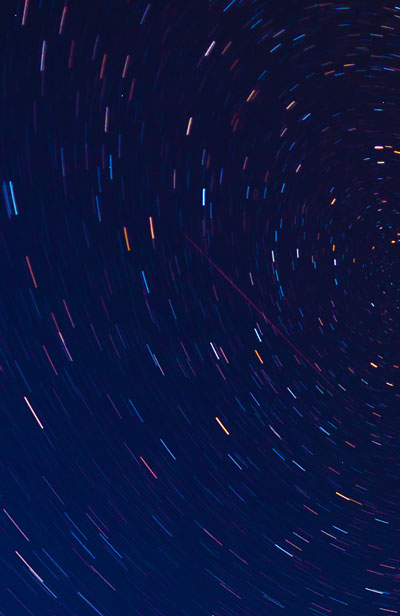
Star colours vary (15 min) depending on type of star, or other object.
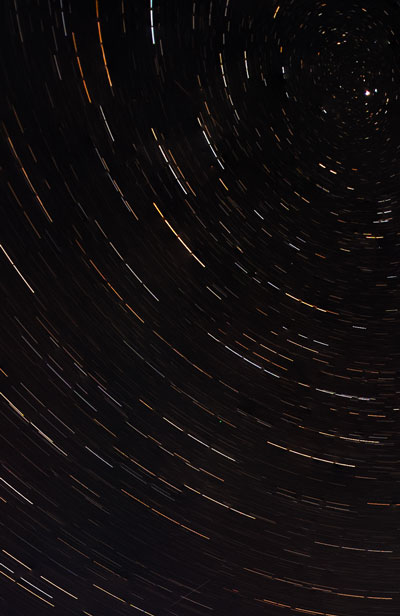
Trail lengths vary (30 min) depending on how far from Polaris they are.
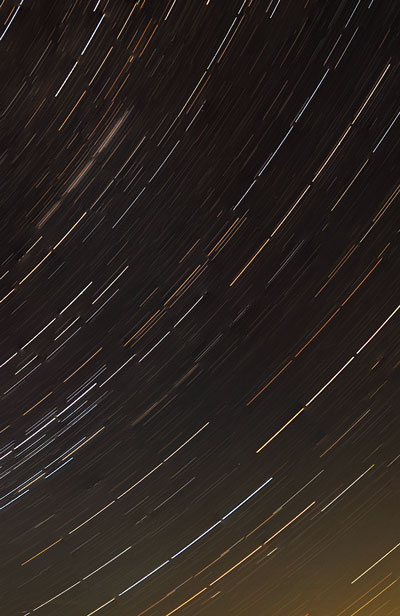
Sky colours vary (60 min) depending on time of night and light conditions.
By using a telephoto lens, we can get closer. Much closer. Star trails normally appear curved. Trails converge or diverge depending on the angle of the lens in relation to the north pole (Polaris). If you look closely though, there’s a sweet spot in the middle between north and south poles that appears barely perceptible as straight lines. One thing to note is that the longer the lens, the shorter the shutter length should be to limit streaking…but with star trails, we want streaking, so all good!
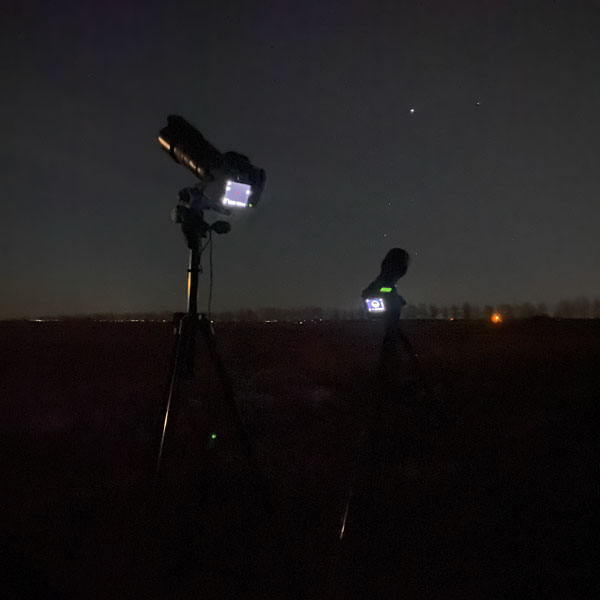
On the left is a Nikon D780 with a Tamron 70-200mm f2.8 lens. The 2.8 aperture is considered a must-have for dark sky photography in order to gather enough light to get the shot. On the right, a Nikon D810 sits atop a very sturdy Manfroto tripod. Locked into the camera is a 150-600mm Sigma zoom lens with a 2x extender to achieve 1200mm of reach. What’s interesting is that I shot the 1200mm length with f13.
To counter the lack of aperture, I opened up the ISO. Note that higher ISO gathers light but can limit saturation of colours.
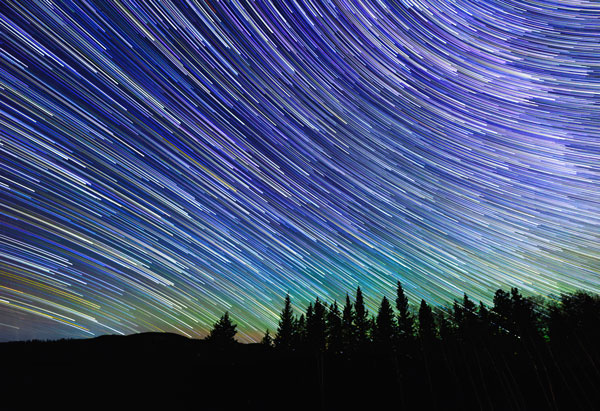
These bright rainbow colours sitting comfortably above the horizon are air glow. Similar in some ways to the aurora, which is caused by particles coming from the sun, air glow are caused by particles emanating upward from the Earth.
Stars, Image Stacked
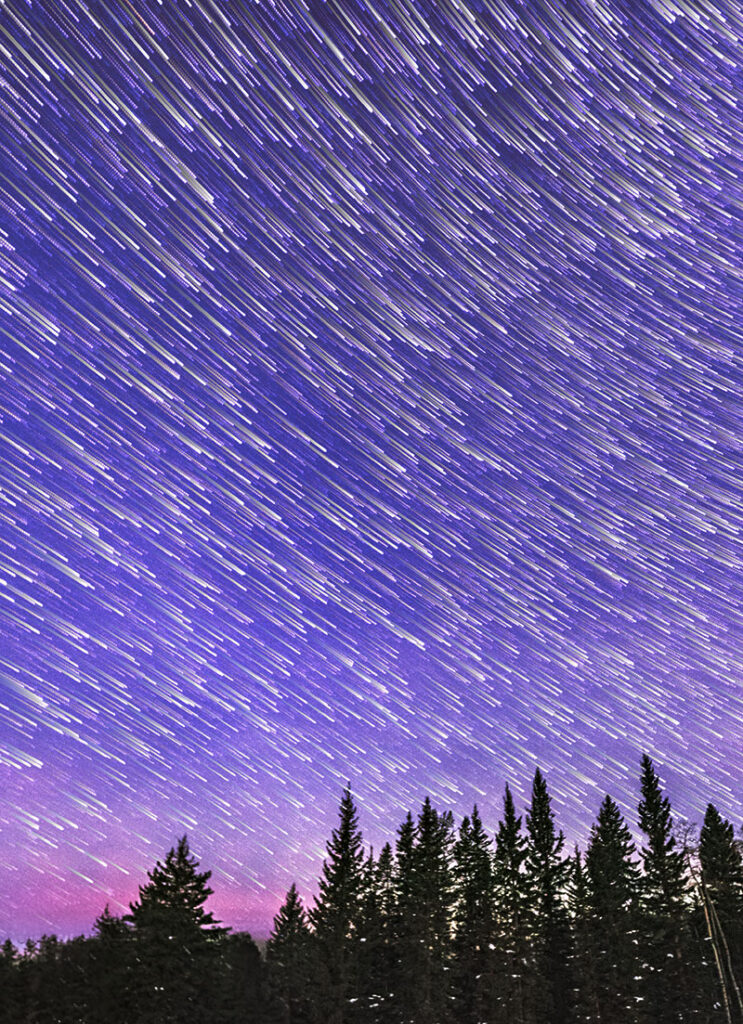
Stars, Time Lapse
Stars, Long Exposure
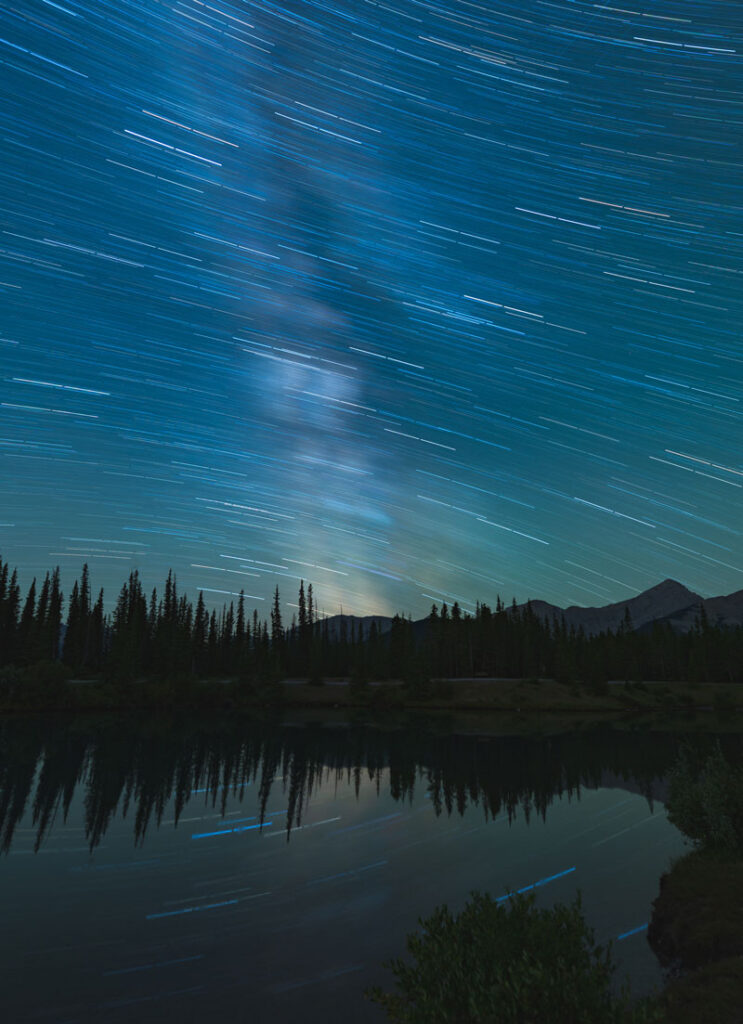
Join me under the stars!
I’m always down to share my experience, tips, and techniques. Photographing and editing the Aurora Borealis, Milky Way, Comets, Meteors, AirGlow, the Moon, and more using little more than a DLSR and remote shutter control on a tripod (optional star tracker) is a blast. Let’s talk.
Stars, Stacked, Comet Mode
Stars, Stacked, Averaged Mode
In the two videos above, I experimented with different stacking modes and motion using StarStax software. There are other apps available depending on your system and needs. Experiment with the number of shots, method of blending, gap-filling, and the comet effect. Outputs vary depending on the source images, so have fun and get creative.
One thing you’ll discover quickly is that stars aren’t actually white. They can be shades of blue, orange, yellow (like our sun), and they vary greatly in size and brightness. Further, many of what we think are stars turn out to be planets, nebulae, meteors, comets, and even entire galaxies.
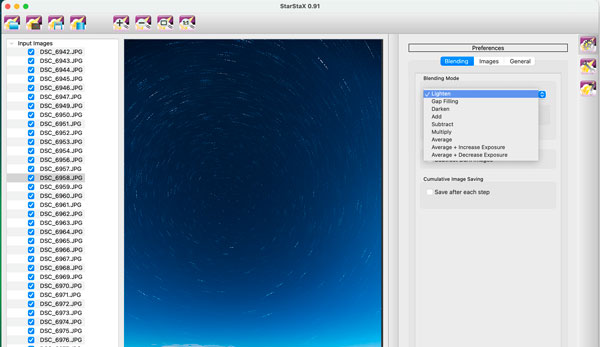
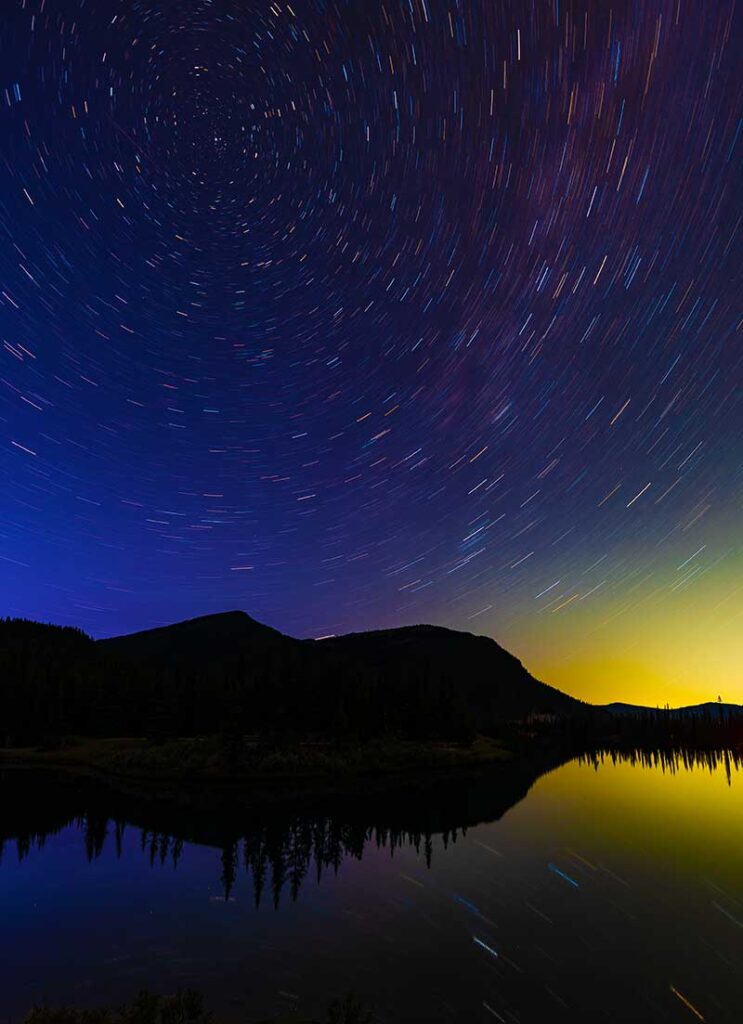
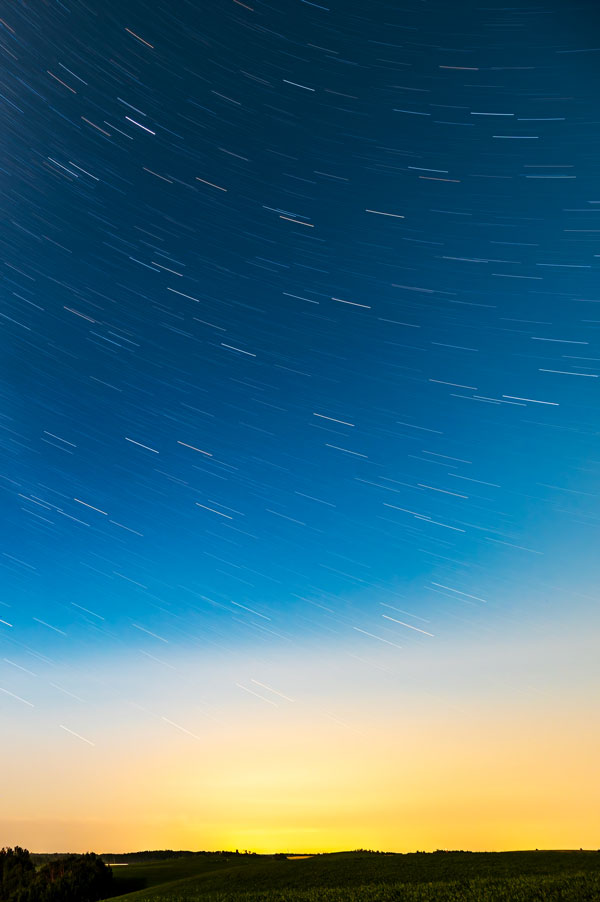
Star Trail Gear
FX (recommended) camera such as the Nikon D780 or Nikon D810, a quality lens like the Tamron 70-200mm zoom lens or Sigma 14-24mm wide-angle lens. Shot in RAW format (NEF), most images I capture are edited and assembled in Photoshop. iMovie, StarStax.